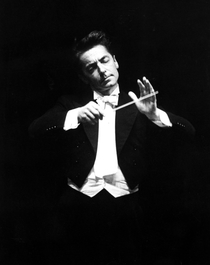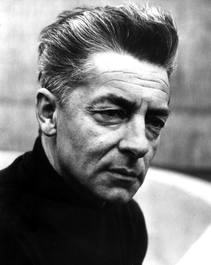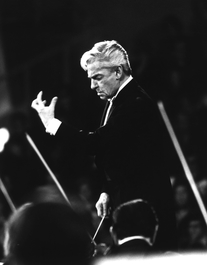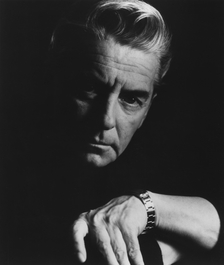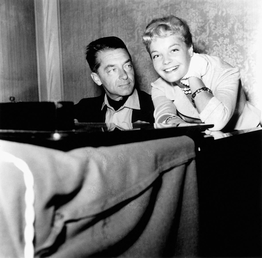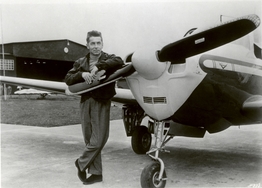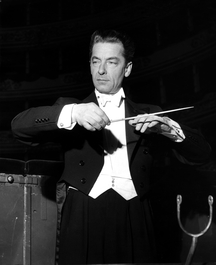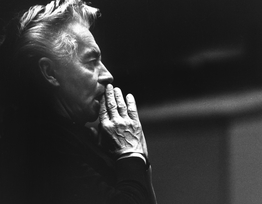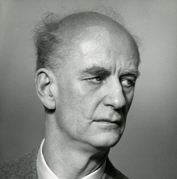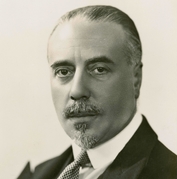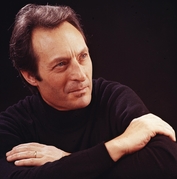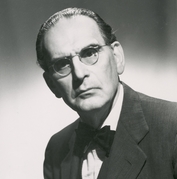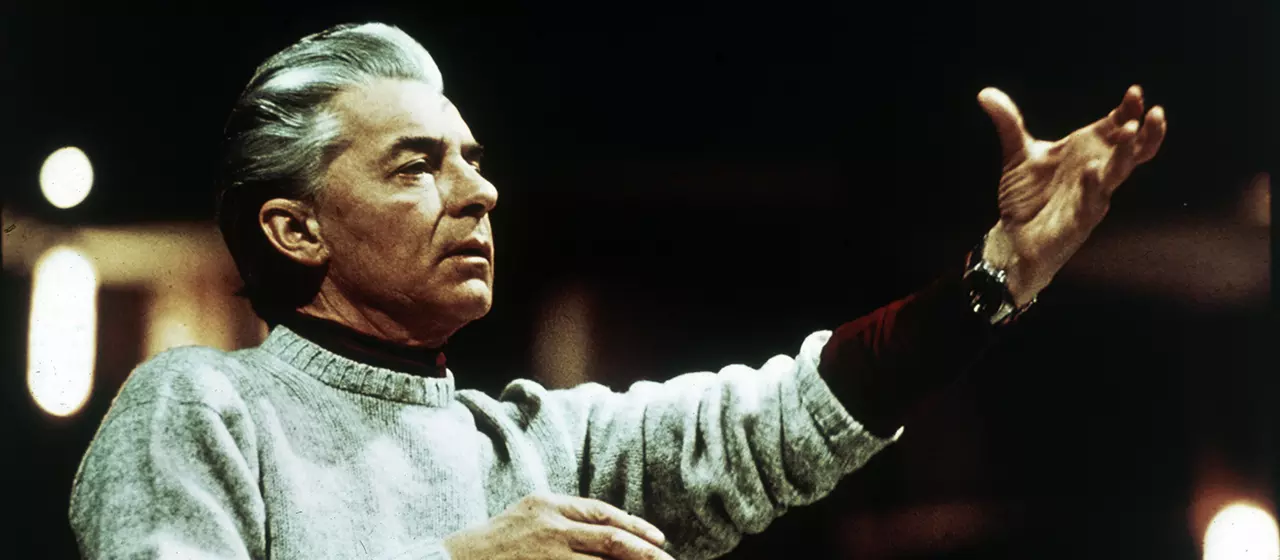

Herbert von Karajan
News
Today marks 110 years since the birth of legendary record producer Walter Legge
'If you examine Walter Legge's work from beginning to end, you will experience something extraordinary and grand. You will hear the work of a man with god-given musicality and imagination, and you will know that all the great artists who appear on these albums worked alongside Walter, with his attentive ears, with the greatest satisfaction.' -Elisabeth Legge-Schwarzkopf
That Walter Legge was a consummate musician is obvious to anybody who knows his work. Yet he received no formal education in music. The source of his knowledge was a local public library in west London. He played the piano, and before heavy smoking took its toll he possessed a good baritone voice; but poor eyesight and a certain lack of physical coordination prevented him from mastering any musical instrument. On one occasion he conducted an orchestra, but after a few minutes he put the baton down, realising that he could never obtain results to satisfy his own acute musical sensibilities.
If he could not reach great heights in making music himself, then he would create great music-making by inspiring others; in later years he referred to himself, with perhaps a touch of irony, as 'a midwife to music'. His first employment within the record industry came in 1929 through the help of the manager of the HMV shop in London's Oxford Street, who recommended him to senior company colleagues. Soon Legge was writing analytical notes for HMV album sets. He then became editor of the company's trade magazine, The Voice.
In the early 1930s, he formed the London Lieder Club, and made contact with some of the finest singers of the day. Early in 1934, he met Sir Thomas Beecham, who was sufficiently impressed to insist that the 27-year-old should produce all his Columbia recordings (HMV, Columbia and Parlophone had amalgamated in 1931 to form EMI Records Ltd). In 1938 Beecham appointed him as his Assistant Artistic Director for two international opera seasons at the Royal Opera House, Covent Garden.
The outbreak of war in September 1939 brought radical change to his working life. EMI continued to make recordings, though on a reduced scale, and Legge (rejected for war service on account of his poor eyesight) found himself responsible for all of the company's classical output. Among Beecham's last recordings before he departed for America in 1940 was one in which unusually he played the piano accompaniment for a young contralto, Nancy Evans, who was to become Legge's first wife the following year.
By June 1940, enemy forces occupied most of Europe, and Legge could only use British-based artists for his recordings. With young musicians returning from the fighting services, plus the pick of the players from other orchestras, Legge founded his Philharmonia Orchestra in October 1945. Almost immediately the new ensemble started to make recordings.
In 1946, Legge visited Vienna to renew contact with established artists and to seek new talent. Over the course of the next five years he made many recordings in Vienna, Lucerne, Prague, Berlin and Geneva, besides running his orchestra and maintaining a busy recording schedule in London. In 1951 he made recordings at the first post-war Bayreuth Festival, and in 1953 he made the first of a series of opera recordings in Milan's La Scala theatre. It was also in 1953 that he married his second wife, the soprano Elisabeth Schwarzkopf, whom he had met in Vienna seven years previously.
A flow of recordings for EMI (now Warner Classics) continued until 1964; he continued to supervise all of Elisabeth Schwarzkopf's recordings until her last sessions, three months before his death in March 1979. His recordings with Callas, Schwarzkopf, Karajan, Furtwängler, Klemperer, Lipatti and many of the greatest artists in the post-war era remain legendary today. He supervised some 3,500 recordings of separate works, large and small. Even in the most unpropitious circumstances, such as an unheated wartime town hall with a leaking roof, or when electrical power had to be provided via a power-driven generator in early post-war Vienna, he strove for the highest possibile artistic standards. He usually achieved his end. -Alan Sanders, 1996
Today marks 26 years since the death of Herbert von Karajan
Twenty-six years ago today, on 16 July 1989, Herbert von Karajan passed away at the age of 81.
His beloved Salzburg Festival, through which he dominated musical life in his hometown from 1948 until his death, opens this weekend; the 2015 edition features Angela Gheorghiu in Werther, Jonas Kaufmann in Fidelio and a 90th-birthday tribute to French composer Pierre Boulez among its 73 events.
The Herbert von Karajan golden age in Salzburg began in the postwar years, when in 1948 he made his opera debut conducting Gluck's Orpheus and Eurydice. He was appointed artistic director in 1956, inaugurated the Large Festival Hall in 1960 with a performance of Strauss' Der Rosenkavalier, and remained closely connected to the festival in the decades that followed.
'Das Wunder Karajan', who remins the best-selling classical recording artist of all time, was prolific in the studio and championed sound technology. Shortly before his death, he mused: "I would like to cryogenically freeze my body and come back in 25 years. One could redo everything one had done, adapting to the recording techniques of 2015."
Warner Classics has done the next best thing. Using advanced technology in the world’s most famous studio at Abbey Road London, a team of leading sound engineers remastered the maestro's complete orchestral recordings for EMI (1946-84) in 24-bit/96kHz high-definition sound.
From this Karajan Official Remastered Edition, 20 classic albums are now available as digital exclusives - for a medium the great conductor himself would have certainly embraced.
“With the discs I recorded, with the music I created,” declared Karajan, “I am eternal.”
The 2015 Salzburg Festival runs from 18 July to 30 August.
New documentary 'Karajan's Magic and Myth' to premiere on BBC Four
Twenty-five years after his death in July 1989, the controversial Austrian conductor, Herbert von Karajan, remains an enigma. He remains the best-selling artist in the history of recorded classical music. Many of these recordings – of Italian opera, of Wagner and Richard Strauss, of Sibelius, Beethoven and Brahms – are treasured by music-lovers around the world.
This musical profile for BBC Four, written and directed by John Bridcut, captures Karajan at work in rehearsal, exploring the method of his music-making during his post-war years with the Philharmonia Orchestra in London, and his long reign as supremo of the Berlin Philharmonic, which in the end went sour.
Karajan was famous not only for his music, but his glittering off-duty moments on the ski slopes, piloting his own jet, sailing his yacht, and driving top-of-the-range fast cars. Yet, at the same time, he was a solitary man with few real friends, who drew his strength from long walks in the Austrian mountains.
In this feature-length profile, the first ever made about Karajan for BBC Television, the musicians who worked with Karajan explain what made him special. The flautist Sir James Galway talks about Karajan's "magic and allure"; conductor Nikolaus Harnoncourt (who in his youth played the cello for Karajan in Vienna) describes the "unique radiation" he had, which nobody could explain; the conductor Sir Neville Marriner (who was a member of the Philharmonia's violin section) says Karajan's contribution to British orchestral life was "immeasurable".
The film also features interviews with orchestral musicians of the Philharmonia, Berlin Philharmonic and Vienna Philharmonic orchestras, with Karajan's secretary, with his recording producers, with the singers Placido Domingo and Jessye Norman, and the conductors Sir Simon Rattle and Sir Mark Elder.
In a major undertaking marking the 25th anniversary of his death, Warner Classics remastered Karajan's complete EMI orchestral recordings from 1946-84, across 13 collectors' boxed sets totalling 100 discs.
Karajan's Magic and Myth premieres on BBC Four on Friday, 5 December, 7.30pm.
Karajan gets a ‘second life’ through remastered EMI recordings
“I would like to cryogenically freeze my body and come back in 25 years. One could redo everything one had done, adapting to the recording techniques of 2015.”
So said Herbert von Karajan shortly before his death on 16 July 1989, in an interview shown as part of the Eric Schulz documentary Karajan: The Second Life.
Twenty-five years on, we have come as close as possible to granting the maestro’s wish. Using the most advanced technology in the world’s most famous studio at Abbey Road London, Warner Classics has remastered his entire orchestral recorded output for EMI (1946-84) in 24-bit/96kHz from the original sources. The Karajan Official Remastered Edition enables us to hear 100 discs of Karajan with fresh ears – just as he would have wanted.
“With the discs I recorded, with the music I created,” declared the legendary conductor, “I am eternal.”
Karajan: The Second Life (L’Autre Karajan/Das Zweite Leben) is broadcast on Arte TV in Germany and France on Sunday, 13 July, 17:40 (53 Min.)
The 13 boxed sets of the Karajan Official Remastered Edition are available here.
Find out how they were remastered here.
